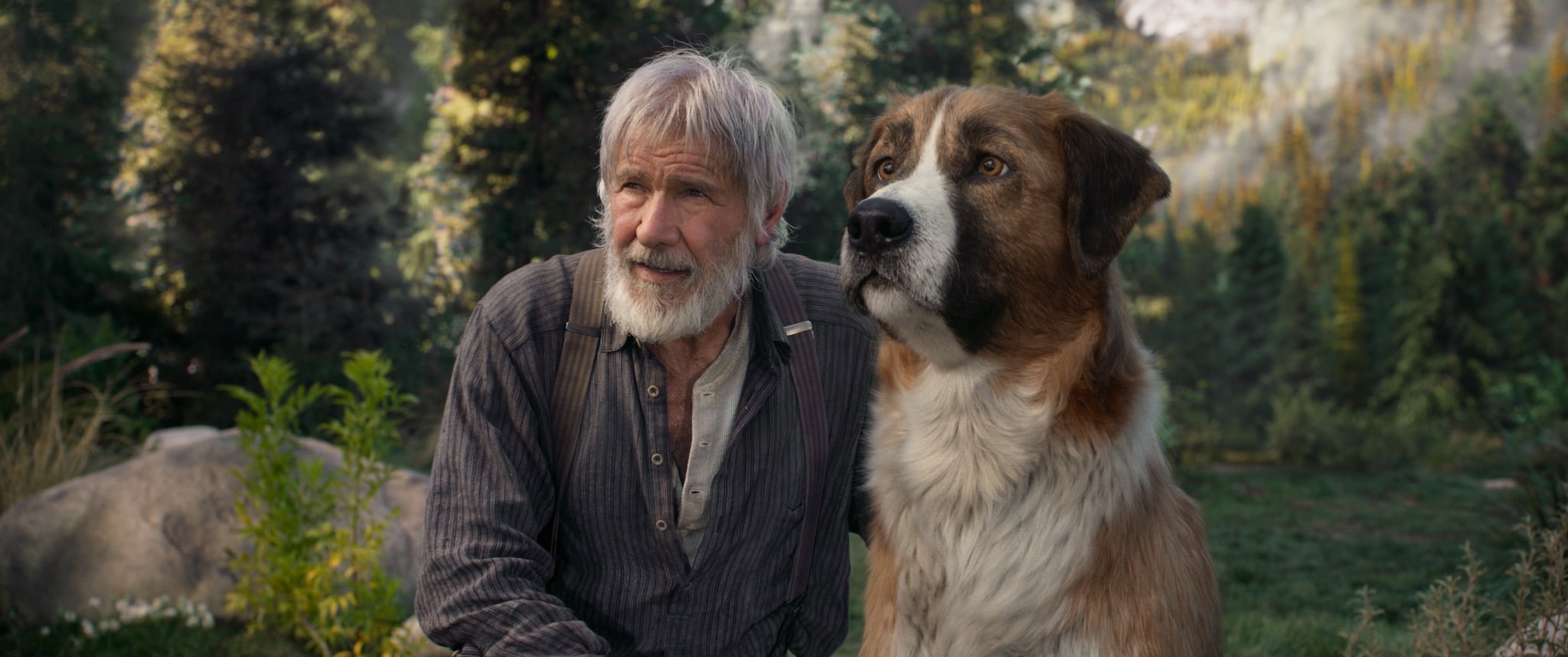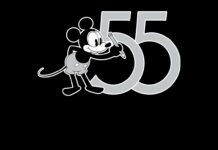This post contains affiliate links and our team will be compensated if you make a purchase after clicking on the links.
Answer the “Call of the Wild” with an enthusiastic howl as this entertaining adventure unleashes the limits between man and dog in the untamed wilderness. Based on the Jack London novel of the same name in 1903, the movie takes on the visual perspective of a dog named Buck as he unwillingly takes on a journey that pulls him away from his California home into the unknown dangers of the Canadian Yukon during the Gold Rush of the 1890s.
The 20th Century Studios film opens with a historical documentary-like animation and narration by star Harrison Ford. Ford carries the narrative commentary of Buck’s life in the first portions of the movie before making his on-screen appearance later in the movie. Buck is taken and passed down from one owner to the next. Never knowing who or how his new master will treat their new dog. Buck’s fate becomes that of a member of a dog-sled team sanctioned to deliver mail across the vast Yukon facing dangers such as freezing temperatures, rocky terrain, icy rivers, and encapsulating avalanches. Danger lurks within as well when the dog sled leader grows jealous of his team growing fond of the newest member. Buck taps further into the animalistic side of his ancestral call and learns to accept his new fate in the wilderness.
Although the marketing places Harrison Ford having a starring role in the advertisement, the real star of the show is Buck. An animated dog with other computer-generated animals directed by Chris Sanders (Lilo & Stitch, How to Train Your Dragon). Chris is just a handful of Hollywood filmmakers taking on the similar pursuit of animation directors tackling live-action directing duties that include Brad Bird (The Incredibles, Mission: Impossible – Ghost Protocol), Andrew Stanton (WALL-E John Carter), and Travis Knight (Kubo and the Two Strings, Bumblebee). The use of CGI animals in live-action environments works in the context and favor to “Call of the Wild”. General movie audiences may see the CGI effects and immediately expect the animals to speak and sing in light of many recent features of that similar animation style as found in Disney’s live-action adaptation of “The Jungle Book” (2016) and “The Lion King” (2019). Thankfully the filmmakers went with keeping the animals as photo-realistic as possible but still have enough facial expressions and body language that may be found in an animated feature. “Call of the Wild” is this generation’s “Spirit: Stallion of the Cimarron”, an underappreciated DreamWorks animated feature from 2002.
Overall, this family-friendly adaptation of the book to screen adventure story is sure to delight all ages. From its fuzzy cuteness, light-hearted humor, the dazzling array of scenery, spectacular visuals, and nerve shaking challenges, “Call of the Wild” is a safe yet fun thrill that displays the sheer will of survival and connection with oneself in the unknown wilderness of life.
Discover more from Socalthrills.com
Subscribe to get the latest posts sent to your email.












